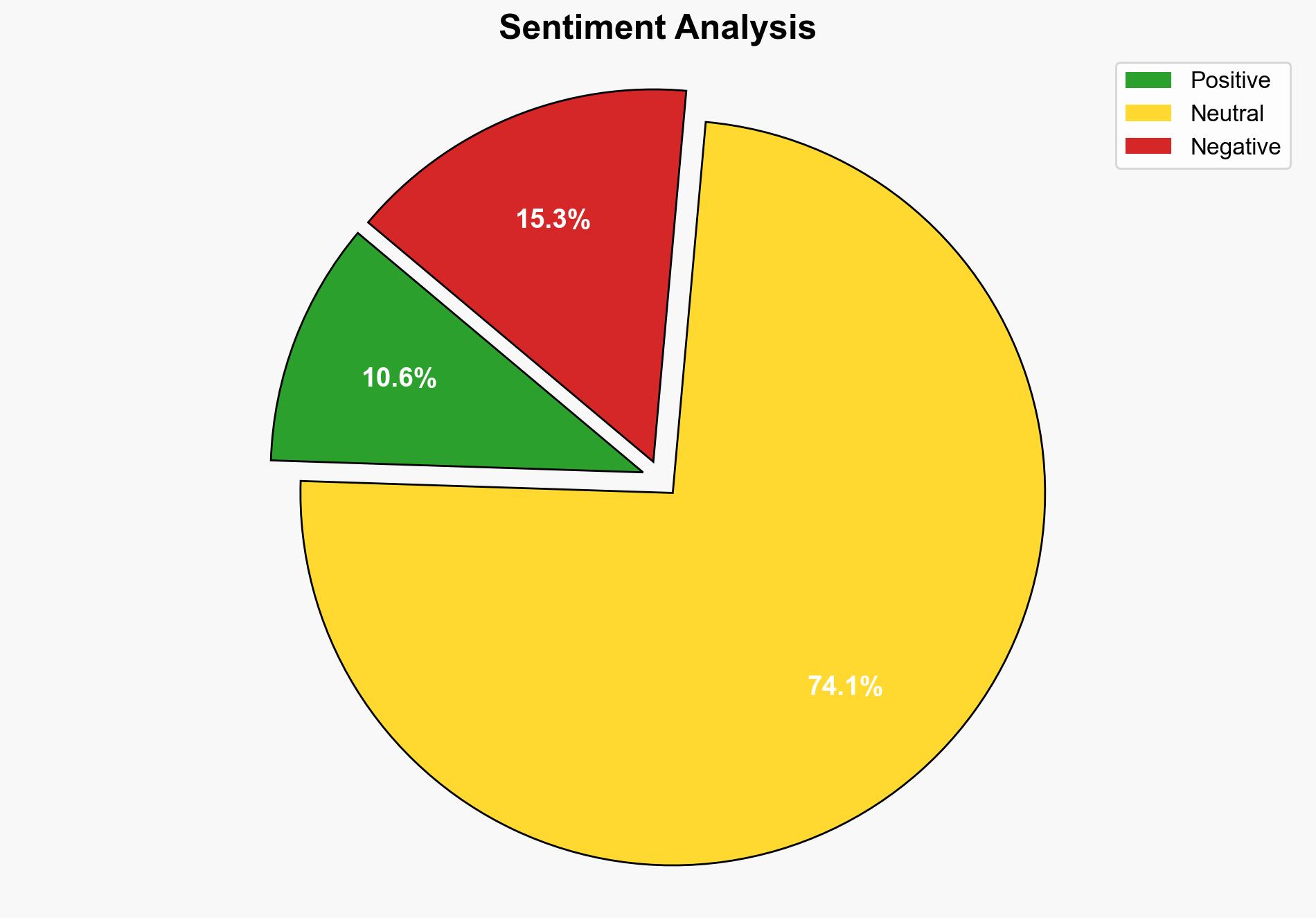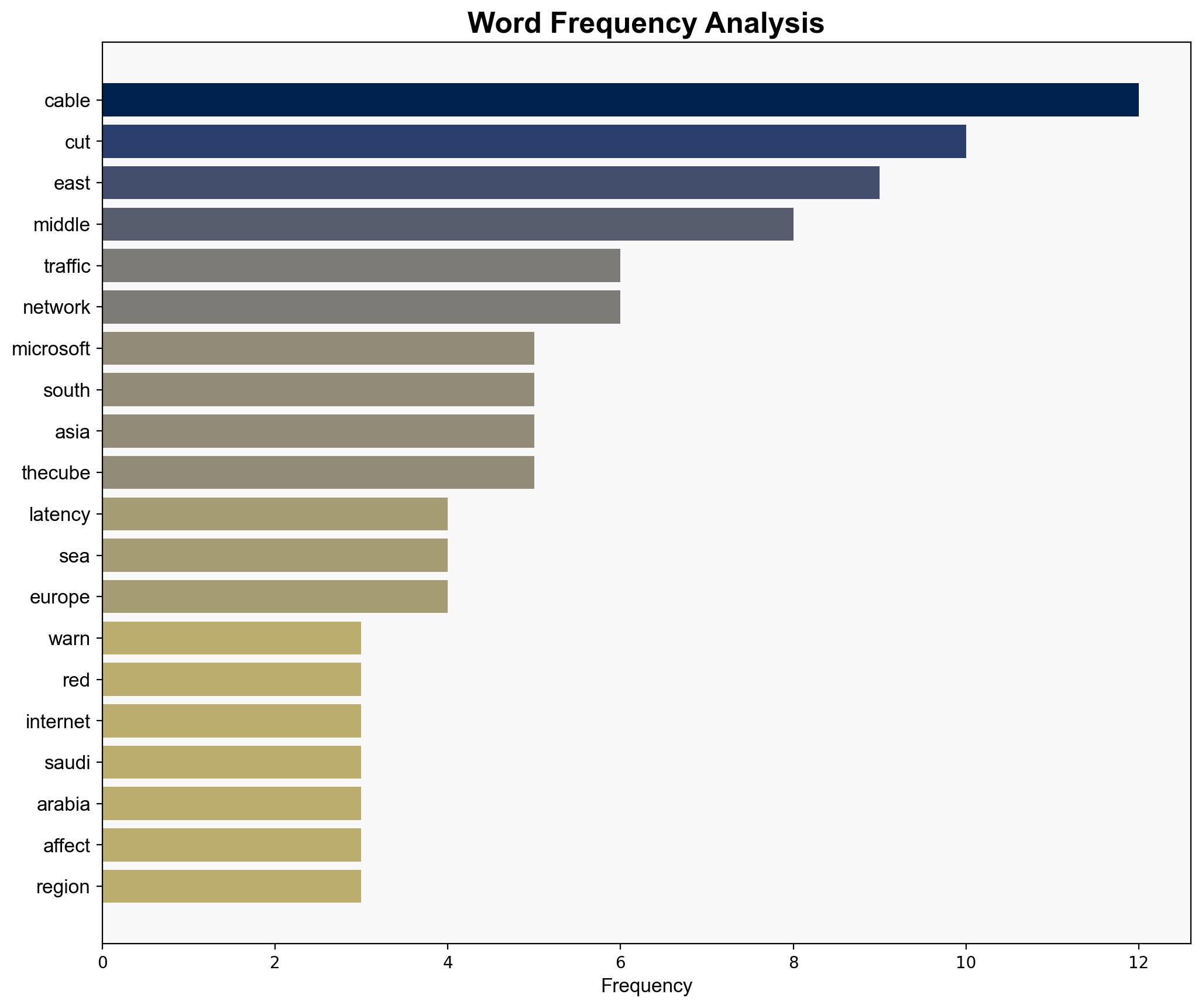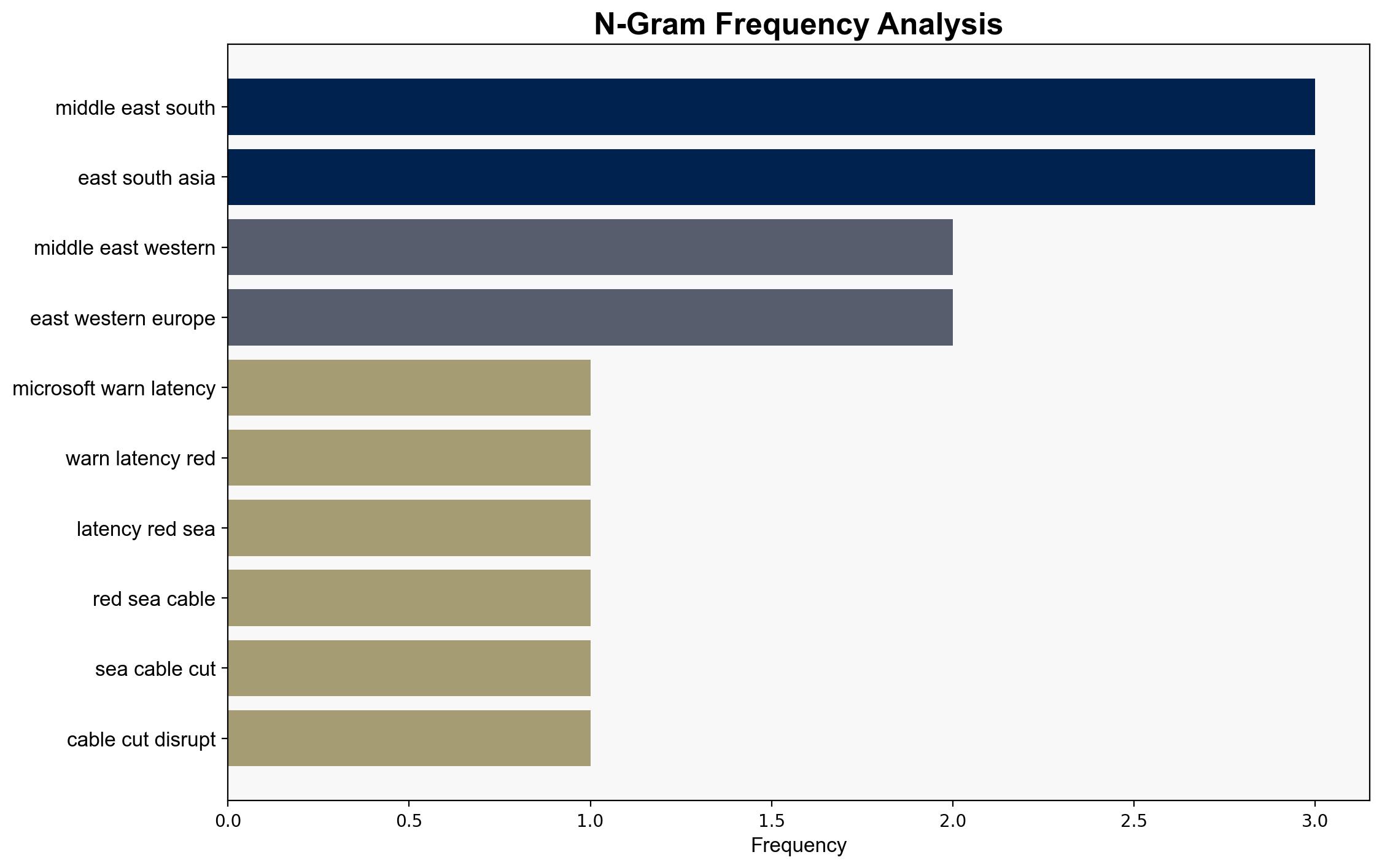Microsoft warns of latency as Red Sea cable cuts disrupt internet across Middle East and South Asia – SiliconANGLE News
Published on: 2025-09-07
Intelligence Report: Microsoft warns of latency as Red Sea cable cuts disrupt internet across Middle East and South Asia – SiliconANGLE News
1. BLUF (Bottom Line Up Front)
The most supported hypothesis is that the Red Sea cable cut was accidental, likely due to an anchor or natural causes, rather than a targeted attack. This conclusion is based on the lack of direct evidence pointing to intentional sabotage and the historical frequency of such incidents being accidental. Confidence level: Moderate. Recommended action: Enhance monitoring and protection of critical infrastructure to prevent future disruptions and improve response times.
2. Competing Hypotheses
1. **Accidental Cable Cut**: The cable was severed due to an accidental event, such as an anchor drag or natural underwater movement.
2. **Intentional Sabotage**: The cable cut was a deliberate act of sabotage, potentially by Houthi rebels or another regional actor, aiming to disrupt communications and create geopolitical tension.
3. Key Assumptions and Red Flags
– **Accidental Cable Cut Assumptions**: Assumes no evidence of deliberate tampering; relies on historical precedence of accidental cuts.
– **Intentional Sabotage Assumptions**: Assumes capability and motive of regional actors to conduct such an operation; lacks direct evidence of sabotage.
– **Red Flags**: Lack of immediate attribution or claims of responsibility; regional tensions could bias interpretations towards sabotage.
4. Implications and Strategic Risks
– **Economic Impact**: Prolonged internet disruptions could affect regional economies, particularly in sectors reliant on digital infrastructure.
– **Cybersecurity Risks**: Increased latency and rerouting may expose networks to vulnerabilities and cyber threats.
– **Geopolitical Tensions**: If perceived as an attack, it could escalate regional tensions, particularly involving actors like the Houthi rebels.
– **Psychological Impact**: Public perception of insecurity in digital infrastructure could erode trust in service providers and governments.
5. Recommendations and Outlook
- **Mitigation**: Strengthen surveillance and security measures around critical undersea cables. Develop rapid response protocols for future incidents.
- **Exploitation**: Use this incident to advocate for international cooperation on protecting global communication infrastructure.
- **Scenario Projections**:
– **Best Case**: Quick repair and restoration of services with minimal economic impact.
– **Worst Case**: Prolonged outages leading to significant economic losses and heightened regional tensions.
– **Most Likely**: Repairs completed within weeks, with temporary economic disruptions and increased focus on infrastructure security.
6. Key Individuals and Entities
– Microsoft Corp
– NetBlocks Ltd
– Global Cloud Xchange Ltd
– Houthi Rebels (potentially implicated)
7. Thematic Tags
national security threats, cybersecurity, counter-terrorism, regional focus





